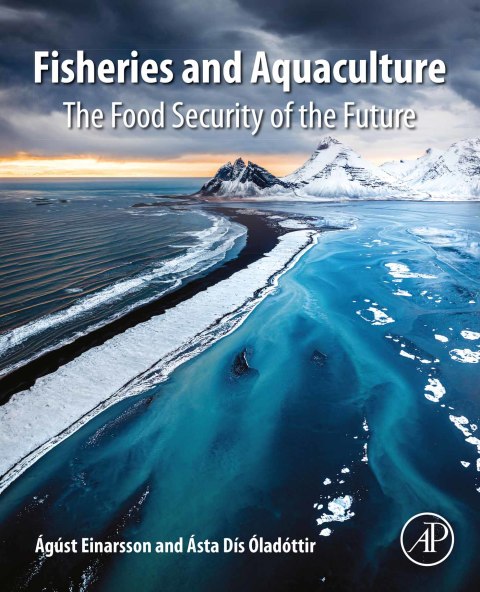Description
Efnisyfirlit
- Cover image
- Title page
- Table of Contents
- Copyright
- Dedication
- List of figures and tables
- List of figures
- List of tables
- Foreword
- Preface
- Chapter 1: Introduction
- Abstract
- 1.1: The dawn of human communities and the origins of fisheries
- 1.2: The role of fish and the sea in religion and lore
- 1.3: The oceans and marine taxonomy
- 1.4: Fisheries in a historical context
- 1.5: Fisheries and aquaculture in modern times
- Chapter 2: Fishing and fish farming
- Abstract
- 2.1: Fishing, the principal fishing countries and harvested species
- 2.2: Fish farming and principal fish farming countries
- 2.3: Consumption of fish
- 2.4: Importance of fisheries and aquaculture for countries and island states
- Chapter 3: Market forces and tools to analyse fisheries and aquaculture
- Abstract
- 3.1: Companies and individuals
- 3.2: Demand and utility
- 3.3: Supply
- 3.4: Cost
- 3.5: Supply and demand in equilibrium
- Chapter 4: Environmental issues
- Abstract
- 4.1: Climate change and changing ecosystems
- 4.2: The United Nations Sustainable Development Goals and their impact on fisheries and aquaculture
- 4.3: Effect of climate change on fisheries and aquaculture
- 4.4: Plastic pollution in the oceans
- 4.5: Antarctica and the Arctic
- Chapter 5: Fisheries management
- Abstract
- 5.1: Common resources
- 5.2: Overfishing and its consequences
- 5.3: Basics of fisheries economics
- 5.4: Different management systems and fishing licence fees
- 5.5: Fisheries management around the world
- Chapter 6: China, the leading fishing and fish farming country of the world
- Abstract
- 6.1: Principal events in the context of history
- 6.2: Development of fisheries and aquaculture
- 6.3: Public management and international trade
- 6.4: China’s future in fisheries and aquaculture
- Chapter 7: Developing countries
- Abstract
- 7.1: Developing countries in fisheries and aquaculture
- 7.2: Fishing by foreigners in the waters of developing countries
- 7.3: Development aid, gender gap, and corruption
- 7.4: Food security of the developing countries
- Chapter 8: Processing and related industries
- Abstract
- 8.1: Handling of catches and quality control
- 8.2: Business environment and value chain
- 8.3: Cluster collaboration and productivity
- 8.4: Innovation and technological advances
- Chapter 9: Sales and marketing
- Abstract
- 9.1: The development of trade
- 9.2: The market clearing forces of price and quantity
- 9.3: Market models of producer and consumer interaction
- 9.4: Other aspects of marketing
- 9.5: Exports and imports of fishery commodities
- 9.6: Dynamics of trade and increased interdependence
- Chapter 10: Finances
- Abstract
- 10.1: Basic financial principles of fisheries and aquaculture
- 10.2: Financial analysis
- 10.3: Competitive advantage and investments in technology and innovation
- 10.4: State support in fisheries and aquaculture
- Chapter 11: Globalisation
- Abstract
- 11.1: Globalisation in fisheries and aquaculture
- 11.2: Market entry strategies and motives
- 11.3: Nonequity mode
- 11.4: Equity modes
- 11.5: Largest companies in fisheries and aquaculture in the world
- Chapter 12: Management
- Abstract
- 12.1: Size, organisation, and management of enterprises
- 12.2: Strategy and SWOT analysis
- 12.3: Porter’s five forces model
- 12.4: Knowledge management
- 12.5: Family-owned enterprises
- 12.6: Women in fisheries and aquaculture
- Chapter 13: Legal framework, research, and some peripheral issues
- Abstract
- 13.1: Governments and legislation that applies to fisheries and aquaculture
- 13.2: Education, research, and artistic creation
- 13.3: Whaling
- 13.4: Angling and recreational fishing
- 13.5: Demand and supply of fish in the future and food security
- Chapter 14: Summary
- Index of names
- Index of terms
- References






Reviews
There are no reviews yet.